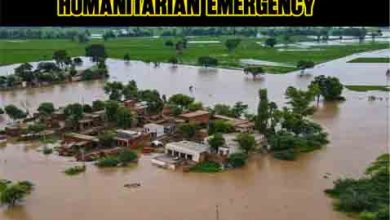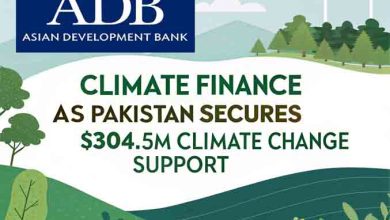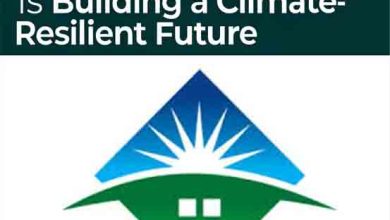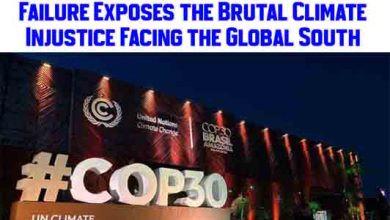UNDP Champions Bold Climate Action: Glacier Preservation Unites Mountain Nations Against Meltdown Threat
Glacier preservation is emerging as a critical frontline in the global climate fight. As glaciers melt at unprecedented rates, millions of people face rising risks of water scarcity, floods, and climate-induced disasters. In May 2025, more than 2,500 global participants convened in Dushanbe, Tajikistan, for the High-Level International Conference on Glacier Preservation—a milestone moment uniting mountain nations like Pakistan, Nepal, and Tajikistan.
Organized with the support of the United Nations Development Programme (UNDP), the event spotlighted innovative, local, and sustainable strategies for protecting glaciers and reducing Glacial Lake Outburst Flood (GLOF) risks.
Tajikistan Leads the Way: 2025 Declared International Year of Glacier Preservation
At the opening of the conference, President Emomali Rahmon delivered a sobering message: the glaciers that define Tajikistan’s geography—and sustain water for millions—are rapidly disappearing. Home to 60% of Central Asia’s glaciers, the country has already lost more than 1,000 glaciers in just 30 years.
Thanks to Tajikistan’s persistent climate advocacy, the UN has declared 2025 the International Year of Glacier Preservation, and 21 March is now World Glacier Day. These declarations are more than symbolic—they underscore an urgent call for international research, financing, and cooperation.
A new UN Glacier Trust Fund was also launched to mobilize global resources for glacier protection, as projections indicate over 50% of Central Asia’s glaciers may vanish by 2050 (source: UNEP).
Why Pakistan and Nepal Were in the Spotlight
Pakistan, Nepal, and Tajikistan share steep, glacier-laden terrains and acute vulnerability to climate change. In 2022, Pakistan’s historic floods submerged one-third of the country, causing USD 30 billion in damage. Nepal, meanwhile, has seen a rise in glacier-induced disasters like the Melamchi flood (2021) and the Thame GLOF (2024).
These countries are witnessing increased GLOF frequency, droughts, and changing water patterns due to glacier retreat. It’s a crisis that threatens food, water, and energy security—and one that demands shared innovation.
Innovative Local Practices from Pakistan
Shiraz Ali Shah, Head of Climate Change at UNDP Pakistan, presented innovative, indigenous glacier preservation techniques during the conference. These include:
- Glacier Grafting: Moving ice from shaded areas to expand glacier mass.
- Ice Stupas: Winter-built ice towers that melt in summer to supply water.
- Avalanche Harvesting: Collecting snow from safe avalanches and storing it for gradual melt and water supply.
“These solutions blend traditional wisdom with climate science,” Shah said. “They’re low-cost, replicable, and most importantly, community-led.”
UNDP’s Pakistan programme is supported by Green Climate Fund, China, and Italy, demonstrating how international partnerships are essential for scaling solutions.
Nepal’s Watershed-Based Climate Adaptation Model
Deepak KC, UNDP Nepal’s Climate Change and Resilience Analyst, shared his country’s pioneering work on watershed-based GLOF risk reduction. Nepal’s model integrates:
- Bioengineering for slope stabilization
- Drone seeding to restore degraded land
- Conservation ponds for rainwater harvesting
- Community-led early warning systems
One watershed saw a 70% decline in landslide risk, thanks to community involvement and nature-based solutions. Nepal also employs lake-lowering projects and siren-triggered evacuation drills, empowering communities to respond swiftly to threats.
“We’re not just protecting glaciers—we’re protecting livelihoods, traditions, and futures,” KC noted.
Nepal’s efforts align with its National Adaptation Plan and NDC 3.0, which commit to carbon neutrality by 2045 and ecosystem-based adaptation.
UNDP’s Fight Against Super Pollutants in Tajikistan
During a critical side event, UNDP Tajikistan highlighted its work on super pollutants—like black carbon, methane, and HFCs—which accelerate glacier melt.
Umed Vahobov, Programme Specialist at UNDP, revealed that nearly 50% of Tajikistan’s emissions come from these potent pollutants. Actions taken include:
- Promoting biodigesters to cut methane emissions
- Replacing synthetic fertilizers with organic alternatives
- Designing a national plan to phase down HFCs by 2030
Reducing super pollutants can slow climate change four times faster than targeting CO₂ alone, making this a powerful strategy for glacier preservation.
“Acting on super pollutants is cost-effective, impactful, and immediate,” said Vahobov.
This event brought together partners like the Climate and Clean Air Coalition, ADB, ICIMOD, and the Clean Air Fund, reinforcing cross-sectoral commitment to cryosphere protection.
South-South Cooperation as a Climate Solution
The conference stood out for its model of South-South Cooperation—an approach where developing nations share tested solutions with one another. By bringing experts from Pakistan and Nepal, UNDP Tajikistan demonstrated how regional knowledge exchange can drive local action.
With operations in 170+ countries, UNDP is uniquely positioned to replicate effective strategies—like ice stupas in other Himalayan areas or Nepal’s watershed approach in the Pamirs.
This spirit of solidarity and shared purpose is what makes glacier preservation not just a technical mission, but a human one.
Conclusion: Shared Solutions for a Shared Crisis
Glacier Preservation isn’t just a regional issue—it’s a global emergency. With climate extremes growing and glacier melt accelerating, the world’s mountain nations must lead together.
Through knowledge exchange, community innovation, and climate finance, UNDP is helping countries like Pakistan, Nepal, and Tajikistan turn vulnerability into resilience.
As the planet heats up, glaciers are melting—but so are boundaries. Mountain nations are finding strength in shared experience, showing the world that local action, backed by global support, is the most powerful weapon against climate collapse.
External Resources
Internal Links
- Pakistan’s Climate Adaptation Strategies
- Nepal’s Climate Policy Framework
- UNDP’s Work on Cryosphere and Mountain Resilience
For media inquiries, contact:
Nigora Fazliddin
Communications Analyst, UNDP Tajikistan
📧 nigorai.fazliddin@undp.org







